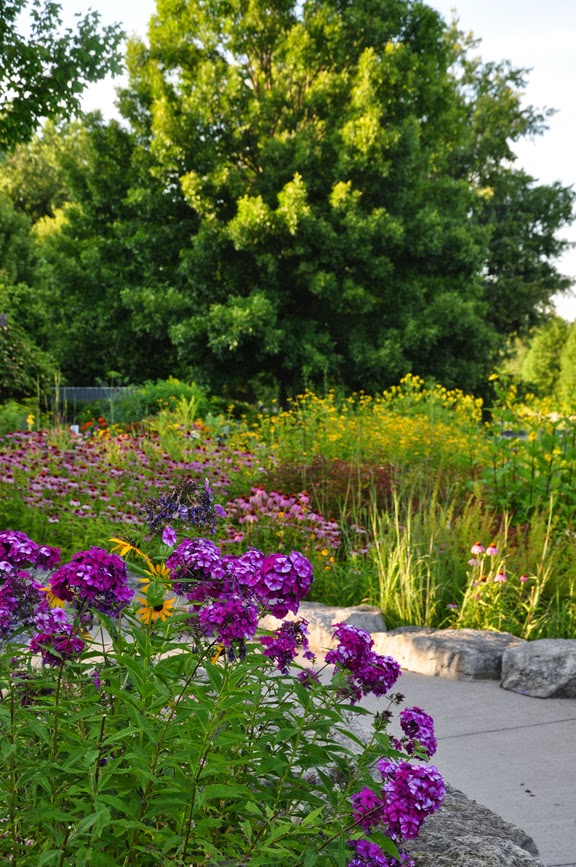Much of what I know about Japanese Maples comes from simple observation.
They are relatively slow growing. The little green leafed one I bought five years ago is practically the same size it was when I bought it!
My own little Japanese Maple
Japanese Maples turn the most fantastic colors each fall. Add in a little sunlight and
you have pure magic!
Looking over the fence to my neighbour's Japanese Maple.
Chen's garden in Milton, ON
It doesn't take much keen observation to note that Japanese Maples have a
dramatic presence in any garden.
Chen's garden
Tell me that this area of Chen's garden in Milton, ON would as pleasing if it weren't for the
large red Japanese Maple you see in the foreground!
Marion Jarvie's garden in Thornhill, ON
And it's not just the color of their leaves. The branches of a Japanese Maple sweep
upward, outward or cascade downward with such grace.
Private garden in Dartmouth, N.S.
Even in winter, there is a certain beauty in their bare limbs.
Private Garden, Mississauga, ON
Their overall shape can be quite elegant...
Marion Jarvie's garden in Thornhill, ON
or gnarly and sculptural.
Private garden in Toronto, ON
It seems that less is more when it comes to Japanese Maples. Just one is often enough.
Private garden, Toronto, ON. In the foreground is Acer shirasawanum 'Aureum'
There are also pretty versatile. They are small sized trees that that can work in almost sized garden; even a modest one. (The majority of Japanese Maples grow to 6-15 feet in height, with some reaching as high as 30 feet. True dwarf Japanese Maples can grow as little as 3ft.)
Acer shirasawanum 'Aureum'
Japanese Maples do however, have a few drawbacks. They can be really pricy.
Demand seems to have brought the price down on a few common cultivars (Locally you pick up a small Japanese Maple for as little as $25 at Loblaws Garden Centres each spring).
But anything more unusual is likely to cost you are pretty penny.
Acer campestre 'Carnival' in a private garden in Toronto, ON
And more interesting options like this Acer campestre 'Carnival' (above) are not always readily available. Often you need to track them down at speciality nurseries.
Acer campestre 'Carnival': The foliage of 'Carnival' emerges with pink and cream and gradually becomes green with white margins. 'Carnival' has a spreading habit and is slow growing (8 feet in 10 yrs) It needs a sheltered spot and is best suited to shade. 'Carnival' likes evenly moist, well-drained soil. USDA Zones 4a-8b.
Acer palmatum 'Koto No Ito' in Marion Jarvie's garden in Thornhill, ON
Possibly the best way to find a particular Japanese Maple is to search for it online.
Acer palmatum 'Koto No Ito': 'Koto No Ito' means harp strings. This cultivar is also known as the Dancing Monkey Tree because of the way its leaves dance in the wind. 'Koto No Ito' turns a lovely yellow with a hint of orange in fall. Mature size:10 year size is 5 to 6 ft. Width is 3-5 ft. USDA Zones 6a-9b.
I happened upon these four Japanese Maples while poking around in a local nursery called Lost Horizons. Unfortunately for me, they are guaranteed hardy only to Zone 5.
They are starting in the top left:
1. Acer palmatum 'Butterfly': A variegated cultivar with bluish-green leaves edged with white.
2. Acer palmatum dissectum 'Seiryu': Lacy green foiage that is red tipped.
3. Acer palmatum 'Grandma Ghost': Cream and pale green leaves with pink veins (this image shows its fall colors).
4. Acer palmatum 'Beni otake': A vigorous upright tree with a bamboo silhouette. It has large purple-red leaves and strap-like leaf lobes.
A Japanese Maple in the Lost Horizons Nursery Display Garden
Linking my last two points: Japanese Maples are an investment, so you will want to take note of the hardiness of the maple you are considering buying before you make your purchase.
In northern climate zones like mine (6b), you will also want to make sure your maple is sited in a protected location. Even the more hardy varieties of Japanese Maples will often suffer winter damage here or perish mysteriously. I had one little red Japanese Maple for a number of years, and then one winter, it up and died.
Acer palmatum dissectum 'Viridis'
Here are some general notes on growing Japanese Maples that I have gathered from a variety of sources:
Japanese Maples are categorized according to leaf type. There are two main groups of Japanese Maples. Probably the most familiar Japanese Maple is Acer palmatum, with its cascading branches of finally cut leaves in 5 to 9 parts. A second group is Acer Japonicum, with leaves that have 7-11 fingerlike parts. There is also a third group of trees: Acer shirasawanum.
Toronto Botanical Gardens, Toronto, ON
Site selection: It's hard to imagine, but try to consider a Japanese Maples's mature size when you site them. Select a sheltered spot where your tree will not be buffeted by strong winds.
Sandy loam with some organic matter is ideal, but Japanese Maples will tolerate a wide range of soils. A soil with too much organic matter however, can actually affect the desired coloration of the leaves.
In terms of light requirements, a general rule is to choose a sunny spot with afternoon shade. Leaf color can also serve as a useful guide to help you determine just how much sun is appropriate for your Japanese Maple. (Note: The amount of light will affect your maple's leaf color.) Red and variegated leaves need a respite from the hot afternoon sun. Green varieties tolerate sun best, but still can be scorched by too much sun. Golden leaves need a bit of sun to keep their color from turning green.
Japanese Maple in Chen's garden near Milton, ON
Planting: The best time to plant a Japanese Maple is in early spring and in the fall, when the tree's roots have to best chance to get established. (Note to self: Avoid clearance sales mid-summer, when any new tree will have to struggle with heat and possible drought. It's a case of false economy!)
To plant your new maple, dig a hole bigger than the root ball and back fill with 1 part peat moss to 3 parts soil. Water it well and mulch the area to keep the roots cool and ensure water retention. Use only moderate amounts of fertilizer such as a transplanter with a ratio of 5-15-5.
Care: Japanese Maples like moderate moisture and good drainage. Extreme drought can affect foliage color of red maples in particular. Once established, it is a good idea to apply a light fertilizer in early spring (4-12-8 fertilizer or 15-30-15 water soluable mixture both work).
Japanese Maple in Chen's garden near Milton, ON
Pruning: Any major pruning should be done before the leaves unfurl and the tree is dormant. Never prune in spring when the sap is rising. Lighter pruning can be done in Juneafer the first major flush of growth takes place. Ensure your pruners are razor sharp for a good clean cut. Begin by pruning away any dead ot diseased branches. It is also a good idea to cut away any scrubby growth or twigs that cross. After that, it comes down to aesthetics. Stand back from your tree and consider every cut carefully. Never use wound dressings or black sealing paint, as they lock disease in rather than keeping it out.
Diseases: Aphids, leaf-cutters and rollers may appear as pests in spring. If that happens, seek an organic control at your local nursery. Mildew can be a problem where there is high humidity.
Marion Jarvie's garden in Thornhill, ON
Winter protection: Japanese Maples do best in USDA zones 6-8. They love the moderate climate of pacific northwest. In hotter areas, they will require aftternoon shade and frequent water. It is interesting to note that the Korean Maple, Acer pseudosieboldianum is a full zone more cold hardy than the most common Japanese Maple, Acer palmatum.
It is recommended that you wrap any new Japanese Maple in burlap for the first three years in a garden.Keeping it watered before the first frost will help guard against water loss in winter. An extra heavy layer of mulch will also help portect the root system during the cold winter months.
Please share your own experience with growing Japanese Maples.











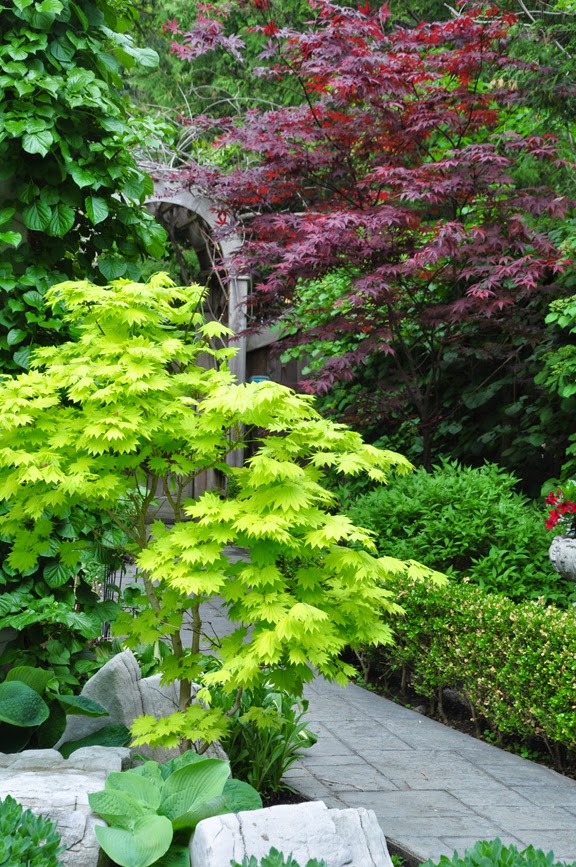




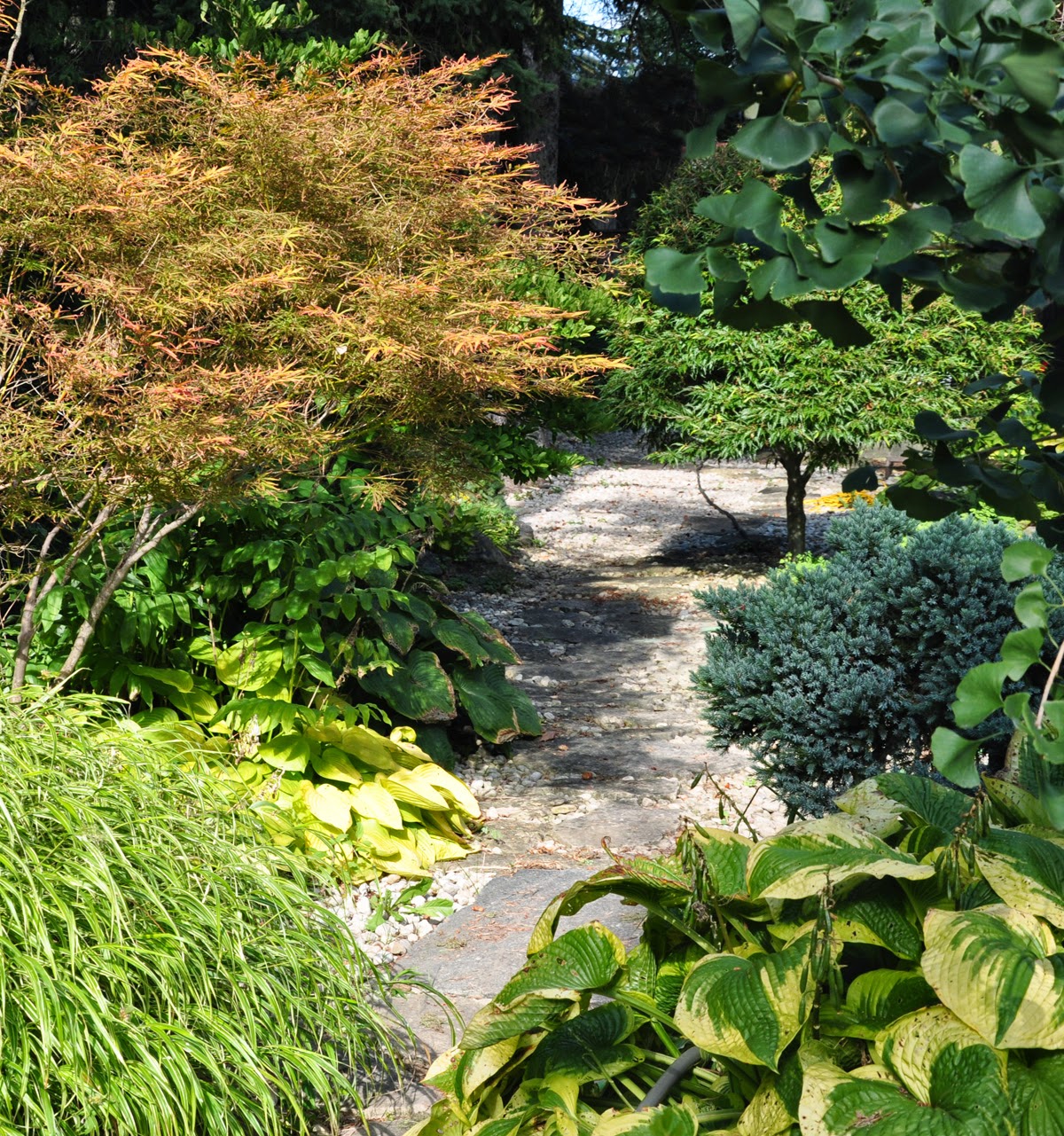
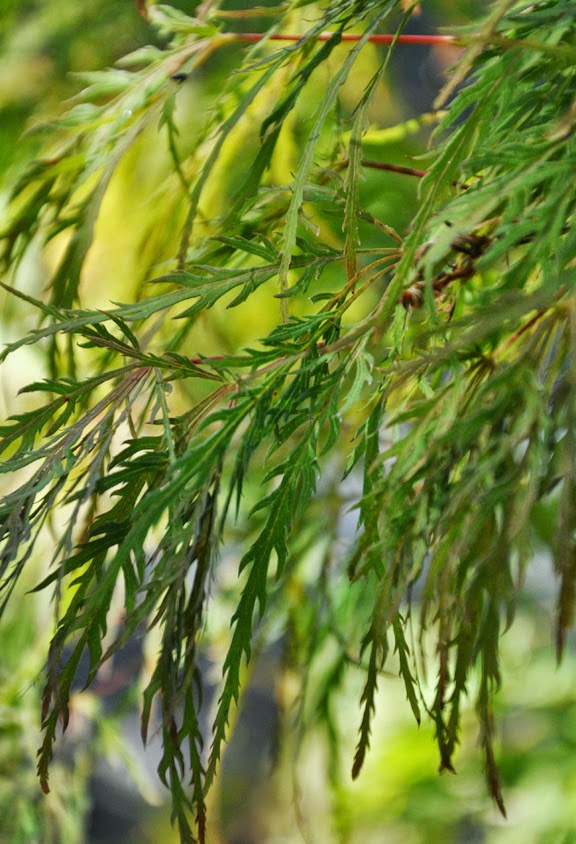







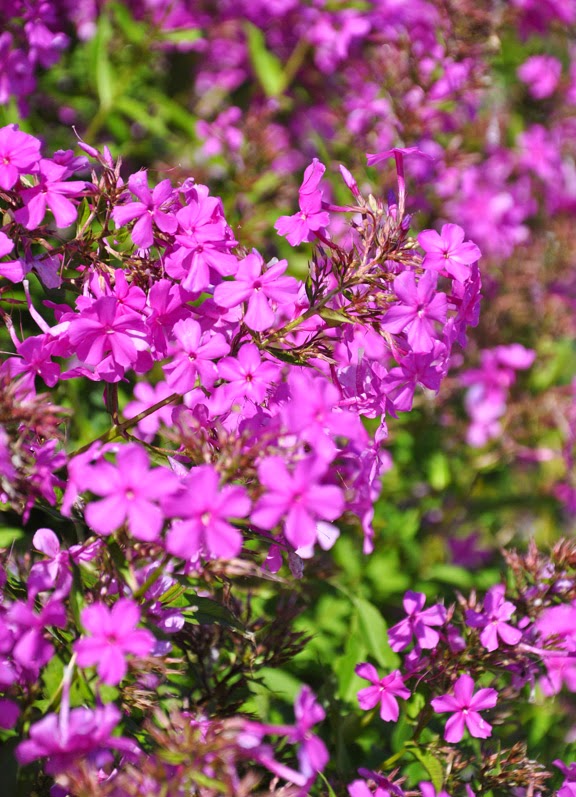






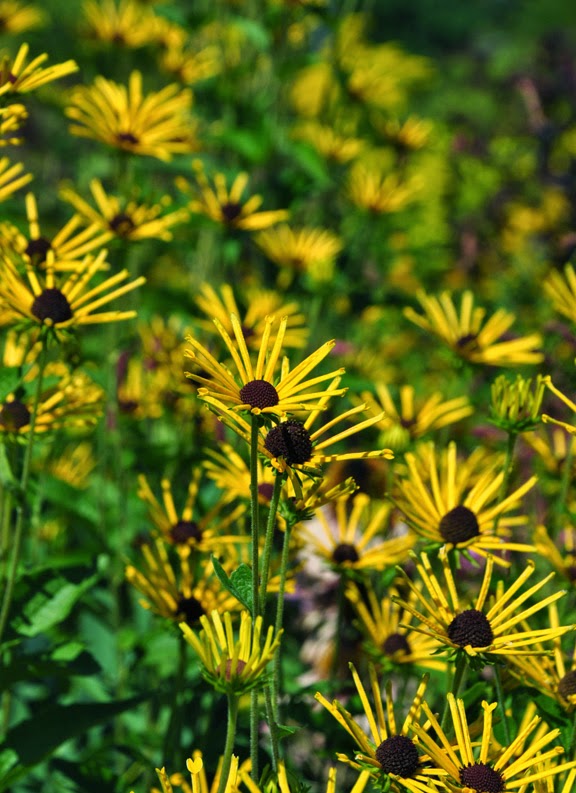
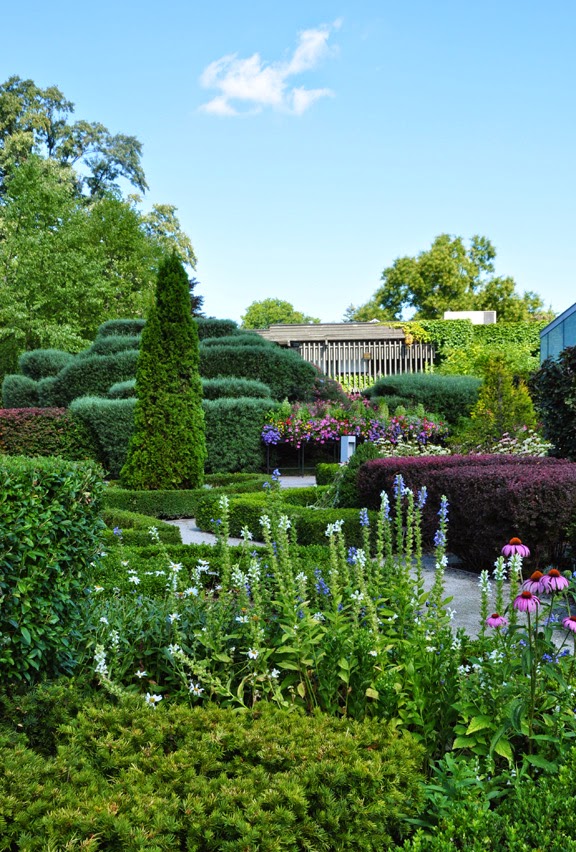

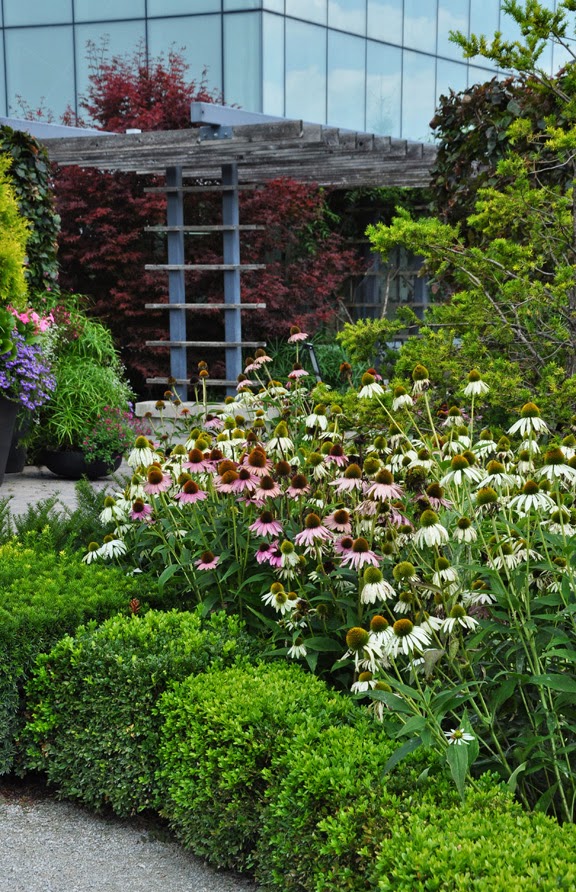

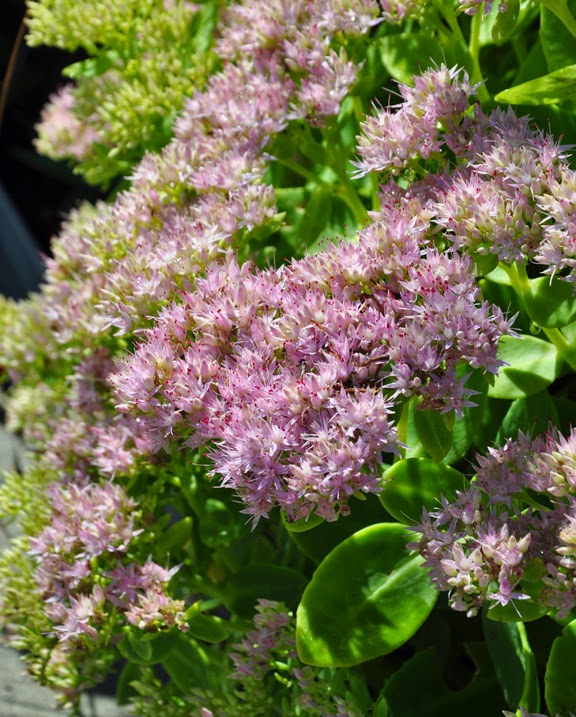

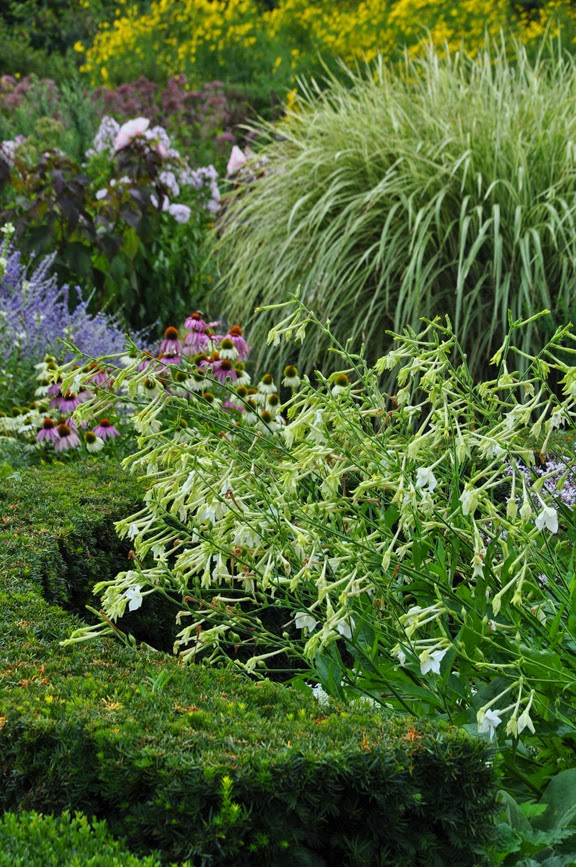


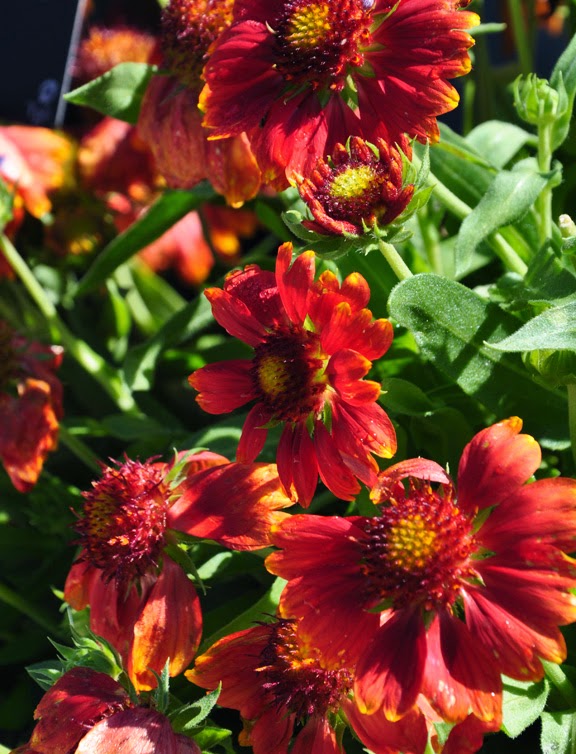
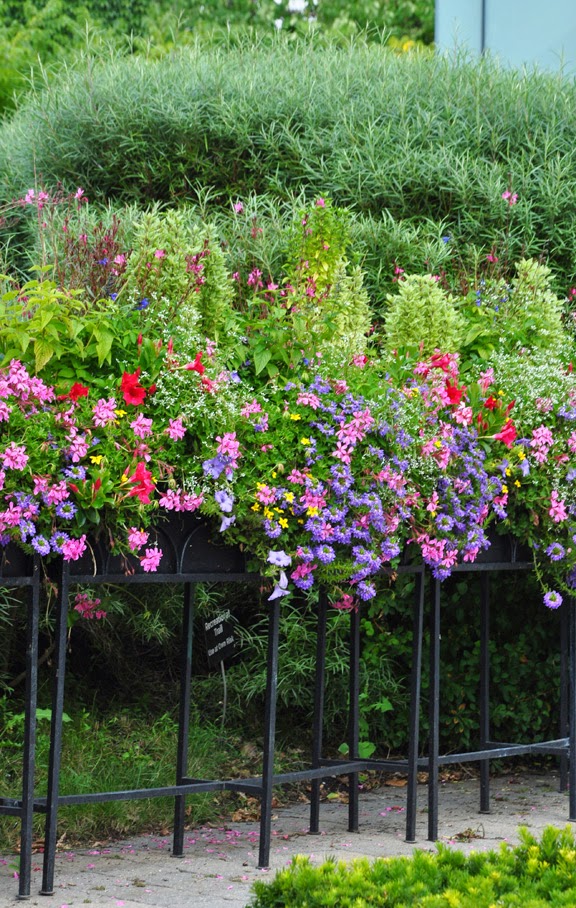















































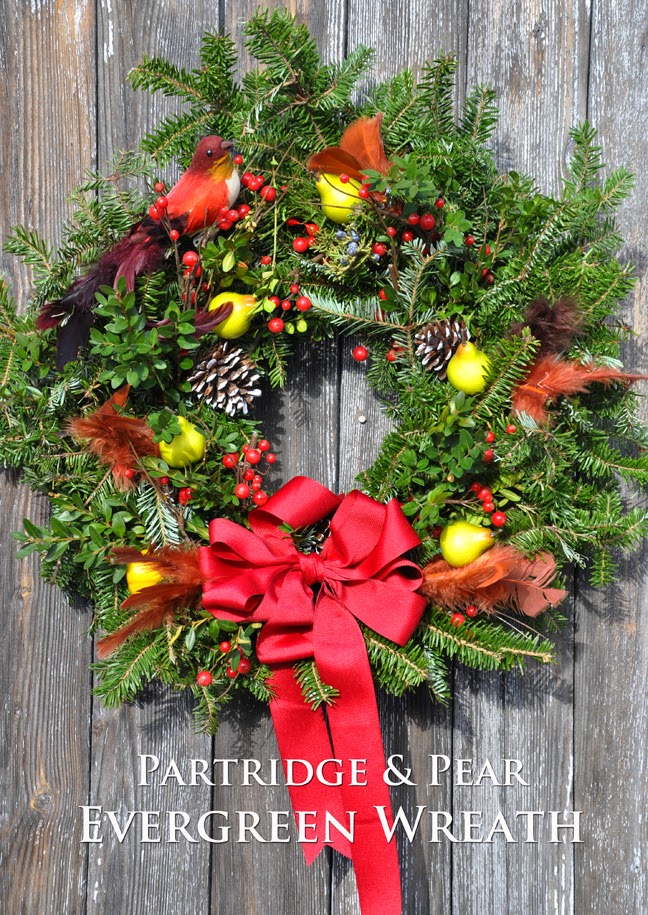





























































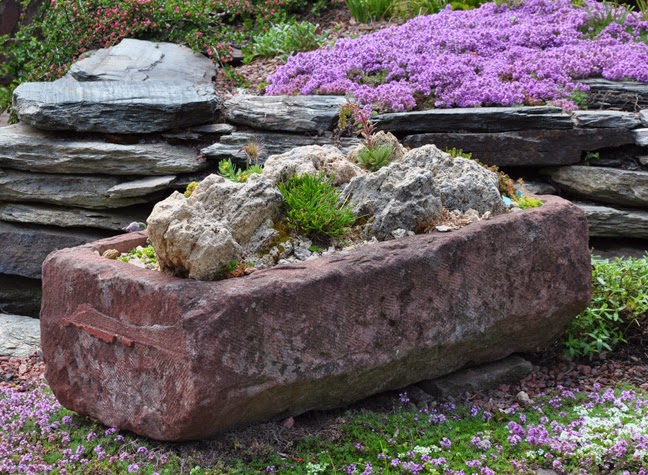






































 Picture by Donna Evers
Picture by Donna Evers



















































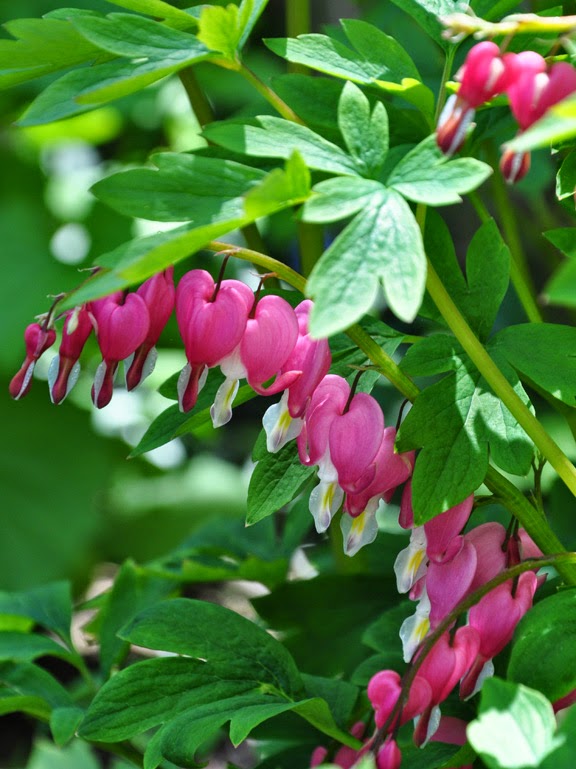






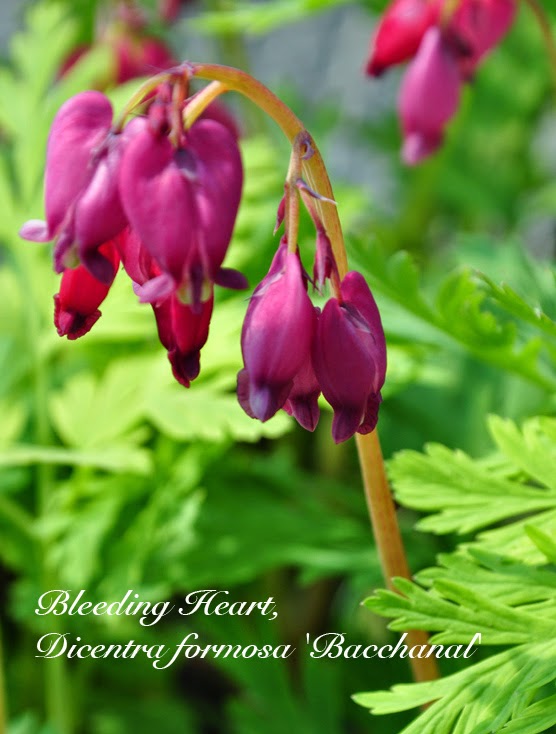

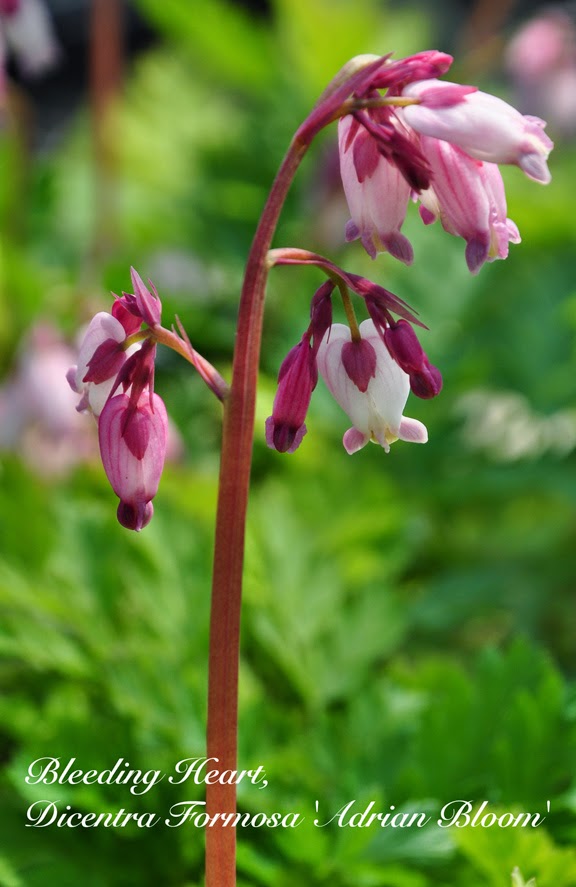

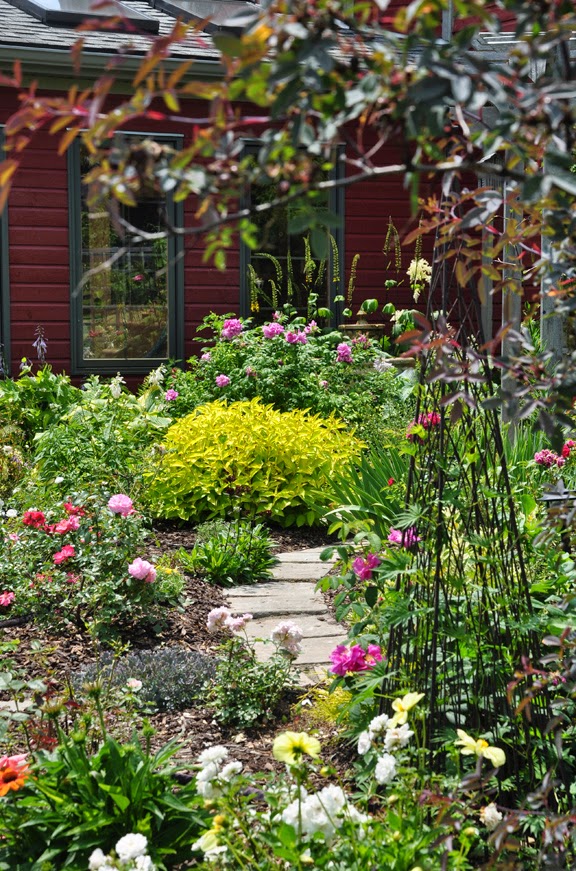





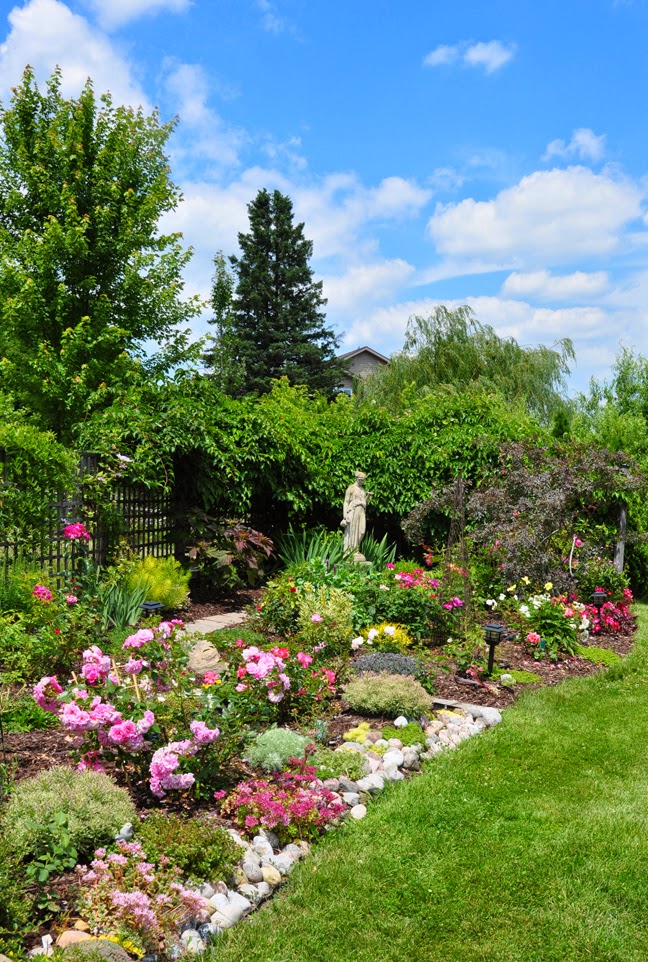








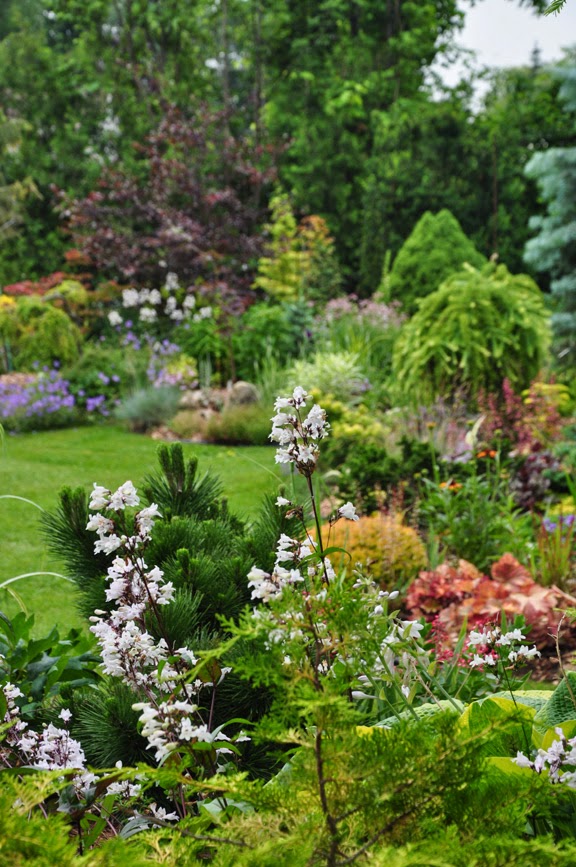


 Private garden, Toronto Ontario. There is a nice mix of Heuchera in the foreground.
Private garden, Toronto Ontario. There is a nice mix of Heuchera in the foreground.







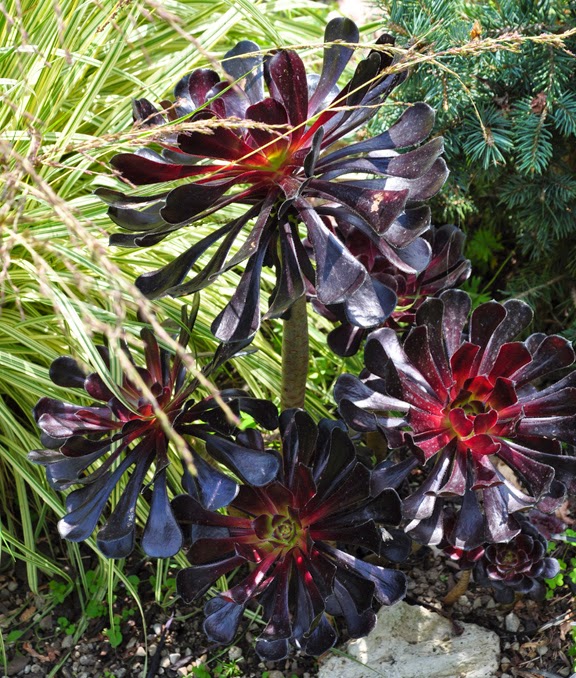


 Donna Ever's garden in Halifax, N.S.
Donna Ever's garden in Halifax, N.S.















 Echinacea mixed with Rudbeckia
Echinacea mixed with Rudbeckia

